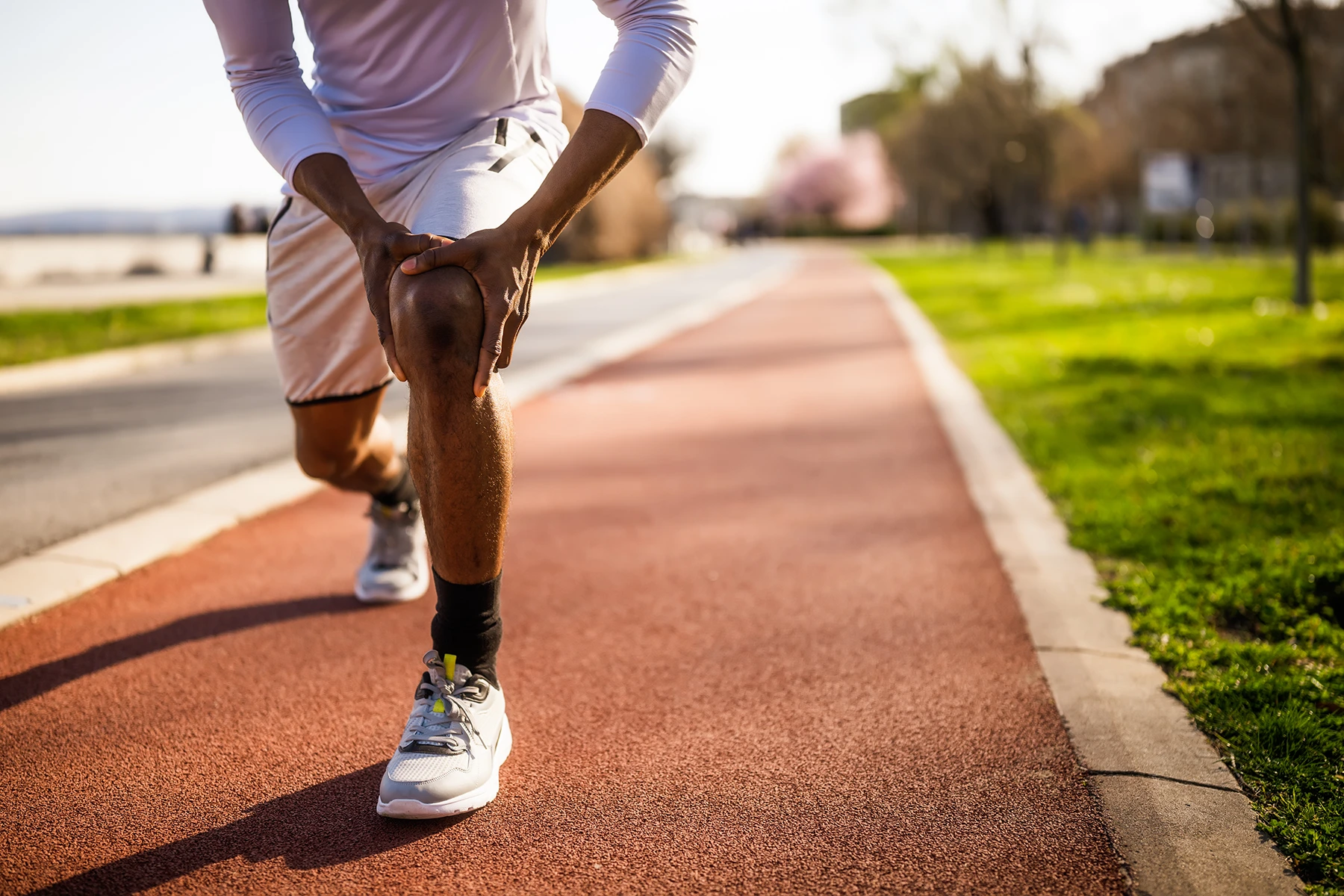Get Back into Exercise: Avoid Injury and Train Smarter

Whether you have a demanding career, are raising kids or just fell out of the habit, you might find yourself returning to exercise after a long break. One of the biggest mistakes people make when starting to work out is jumping in too quickly. This can lead to overuse injuries, frustration and setbacks.
Jennifer Horawski, M.D., a sports medicine primary care provider at UHealth’s Sports Medicine Institute, sees overuse injuries frequently. “A lot of the problems come from whether someone was an athlete when they were younger or worked out a lot, and then life happens,” says Dr. Horawski. “They try to get back into working out or return from an injury, and they just go from 0 to 100 too quickly.”
What are the most common exercise injuries?
Overuse injuries are particularly common in the shoulder, elbow, and knee. In a study of fitness injuries, young males were 1.7 times more likely than females to get injured.
Typical fitness injuries Dr. Horawski treats include the following:
Rotator cuff tendonitis
Pickleball, tennis and weight lifting can all cause overuse inflammation of the tendons in the rotator cuff, a group of muscles and tendons that stabilize your shoulder. Symptoms include shoulder pain, weakness, and difficulty lifting your arm, especially above shoulder height.
Knee pain
Too many squats, too soon, or jumping back onto the basketball court, just like in the old days, can cause knee pain or even meniscus tears and ligament strain. Symptoms may include swelling, stiffness, aching or sharp pain during movement. Knee pain can be aggravated by activities like squatting, running, jumping, or prolonged sitting.
Elbow strain
Like rotator cuff injuries, overuse in racket sports, weight lifting, or golf can cause pain or even muscle tears around the elbow. Symptoms include localized pain, tenderness and reduced grip strength.
These injuries all have in common: doing too much without gradual build-up or rest. “People start experiencing pain because they’re doing too much too soon or using improper technique,” says Dr. Horawski.
How to prevent fitness injuries
Dr. Horawski recommends the following:
- Ease into weightlifting: If you used to do overhead presses with 45-pound weights, start with bodyweight movements and then build up your strength gradually before adding resistance.
- Focus on form: Poor squat, deadlift, or lunge form can cause knee and back pain. Prioritize using a proper technique over simply lifting heavy weights.
- Build up cardio endurance: Start with a lower time, distance, or pace and then slowly increase.
- Listen to your body: If something feels off, stop and reassess. Pushing too hard can set you back for days or weeks.
“It’s not about doing it perfectly but about consistent progress,” says Dr. Horawski.
Overuse injuries in highly active individuals
Even those who are already fit can fall into the trap of overtraining. Dr. Horawski sees this a lot in elite athletes, Ironman competitors, and ultramarathoners. Many experienced athletes push their bodies to the limit, which makes overuse injuries almost inevitable.
“The hardest part for people who are very healthy and active is taking a rest day to do mobility work and stretching so that you give your muscles time to recover from high-intensity workouts,” she says.
Among experienced athletes, Dr. Horawski’s recommendations for injury prevention include:
- Rest and recovery: Dedicate at least one rest day per week to mobility, stretching or light activity.
- Cross-train: Avoid repetitive strain by mixing different types of workouts.
- Recognize pain signals: Don’t ignore unusual pain because your adrenaline allows you to push through it.
Injuries left untreated by rest or physical therapy can worsen over time, potentially leading to more severe problems. “If it’s the typical soreness from a tough workout, it should resolve in a few days. A sharp or shooting pain or a pop is a red flag,” says Dr. Horawski.
Warm-up and cool-down tips for injury prevention
As for stretching, it’s better to do it after most workouts.
- Warm-up: Avoid static stretching before high-intensity workouts. Instead, opt for dynamic movements like bodyweight squats, lateral lunges or a slow jog to activate key muscles and ramp up your heart rate.
- Cool-down: Post-workout is the best time to stretch by focusing on the muscles you worked.
Look out for the heat and fatique
The heat is on.
The heat in South Florida makes weather a common cause of injury. Whether you’re training for a race or walking a few miles a day, be sure to hydrate. “By the time you feel thirsty, you’re already dehydrated,” says Dr. Horawski.
Besides drinking water, replenish your electrolytes and protein for recovery.
Did you get enough sleep?
Fatigue can make you more prone to injury. Even running after too little sleep can cause you to shuffle your feet, making tripping more likely. “Lack of sleep, stress, and overtraining all increase the likelihood of getting hurt,” says Dr. Horawski.
Instead, she says, remind yourself that it’s okay to drop your intensity and modify your workout if you have an off day. “Not every workout can be a 10. Focus on agility, or take a rest day when you’re tired.”
Finally, says Dr. Horawski, whether you’re returning to exercise after injury or a long break, give yourself a bit of grace. She regularly has conversations with former elite athletes who struggle to accept they’re not as strong or as fast as they were in their 20s.
“Your body changes, and what matters is that you’re still showing up and taking care of yourself. Progress isn’t about being at 100% every day,” she says.
Wendy Margolin is a contributor for UHealth’s news service.
Tags: Common workout mistakes, Dr. Jennifer Horawski, Fitness injury prevention, Proper exercise technique, sports injury treatment in Miami
